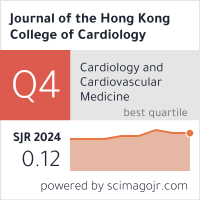Abstract
Background: The major concern during amiodarone (AMD) therapy is the adverse effects including pulmonary toxicity. However, low dose AMD may reduce the side effects without loss of anti-arrhythmic efficacy. The aim of this study is to investigate the efficacy and safety of low dose AMD therapy for tachyarrhythmias. Methods and Results: AMD was given in 84 patients (60 males, mean age 66 years) with atrial and/or ventricular tachyarrhythmias and left ventricular dysfunction (mean ejection fraction:0.26±0.12). The major underlying diseases were ischemic heart disease (36) and dilated cardiomyopathy (27). Mean follow-up period was 15±14.1 months. Oral AMD was initially loaded 400 mg daily for 3 days and then maintained between 50 to 200 mg daily. Follow-up examination was performed before and after oral AMD at 1, 3, 6 and every 6 months. Efficacies for arrhythmias were evaluated by symptoms, standard 12-leads ECG, and ambulatory ECG. Mean initial dose was 200±106.8 mg and maintenance dose was 100±62.6 mg daily. During follow-up period, targeted tachyarrhythmias were successfully suppressed in 66 (78.6%) of 84 patients. Adverse effects were observed in 16 patients (19.0%); thyroid dysfunction (11.9%), liver dysfunction (2.4%), pulmonary toxicity, finger tremor, hypogeusia and sinus bradycardia, respectively (1.2%). Pulmonary toxicity was not lethal and no progression was observed with reducing use of AMD. Conclusion: Low dose AMD therapy was effective for suppression of tachyarrhythmias with impaired cardiac function and safely administered with few serious complications.
Recommended Citation
Yasunobu Kawano, Yuji Nakazato, Gaku Sekita, Takashi Tokano, Efficacy and Safety of Low Dose Amiodarone for Management of Tachyarrhythmias in Japanese Patients Journal of the Hong Kong College of Cardiology 2009;17(1) https://doi.org/10.55503/2790-6744.1087
Creative Commons License

This work is licensed under a Creative Commons Attribution-Noncommercial-No Derivative Works 4.0 License.



